Although Snowy Plovers previously bred along Carpinteria beaches, they had ceased to do so by 1960. In 2013 Adrian O’Loghlen found an adult with two fledglings on the beach just west of Carpinteria, but that had been the only documented breeding record in the last 60 years.*
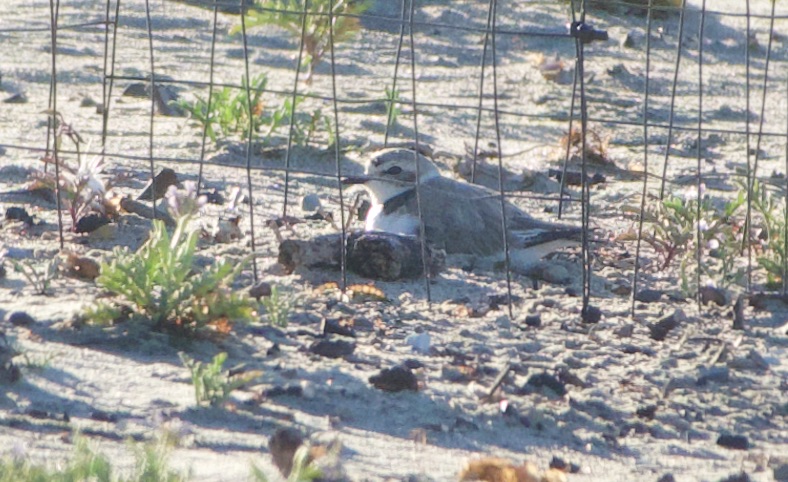
Until now! Two weeks ago, on May 10, scientists notified the State Beach that a Snowy Plover nest had been found on the beach just east of the mouth of Carpinteria Creek. A rope fence was put up to enclose the area, and an anti-predator cage, of the sort that has been used to good effect at other Snowy Plover nesting sites, was placed over the nest.
Like most local birders I was unaware of this development until last Tuesday, when I happened to be birding along the beach and spotted the protective fencing and cage. When I looked at the base of the cage through my binoculars I could see the incubating plover! I only saw one bird on that visit, but when I returned this morning to confirm that the nest was still okay after the big winds last week, I not only saw that the nest was still occupied, but I found a second bird, presumably the other member of the pair, on the beach nearby.
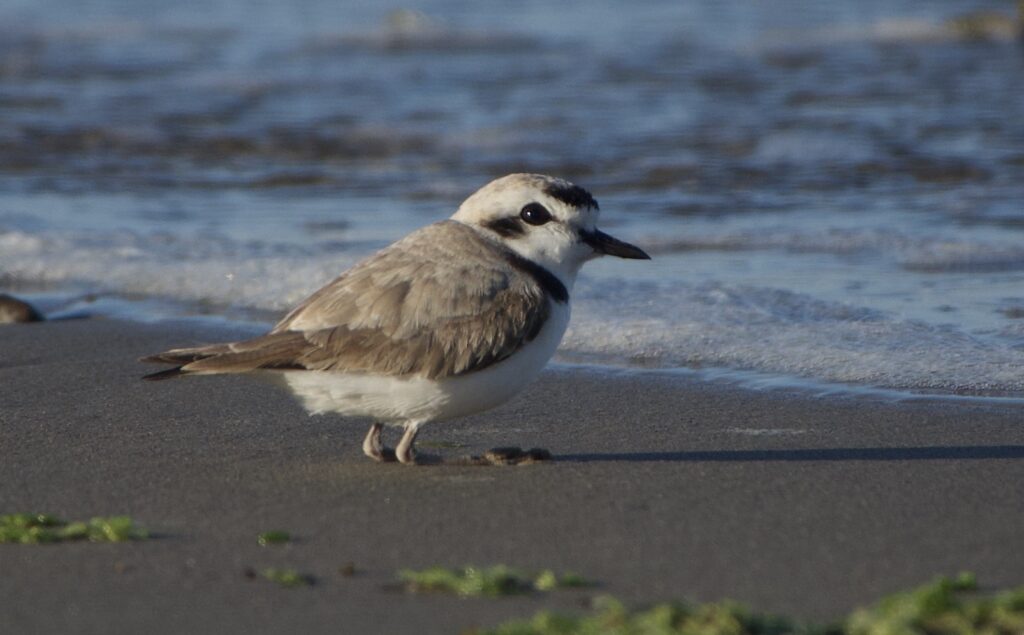
It’s very exciting to have a pair of Snowy Plovers nesting on our local beaches again. At the same time, the odds are stacked against the birds. Human disturbance, along with the profusion of predators (skunks, raccoons, gulls, crows…) that beach trash attracts, are major threats for nesting Snowy Plovers. The nest itself is somewhat protected by its anti-predator enclosure and suggestive fencing, but Memorial Day weekend is coming, and with it big beach crowds. Assuming the nest makes it through the weekend, in another week or so the eggs will hatch, and the precocial young plovers will immediately move beyond that protection as they forage for food.
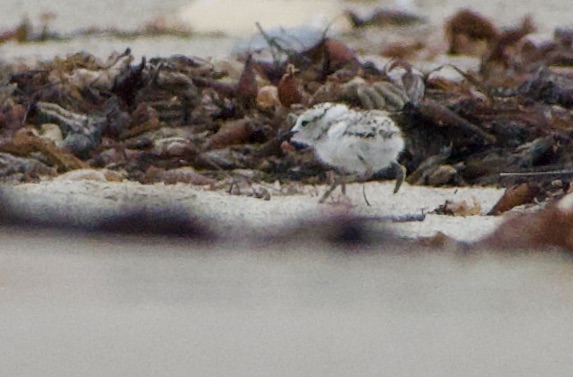
I’m reaching out to Carpinteria Birdwatcher members, along with anyone else who wants to help, to join me in a volunteer “plover watch.” If we take turns watching the site, keeping our eyes out for the birds and reminding human visitors to respect the fencing, we can improve the plovers’ chance of survival. That in turn could mean more plovers on Carpinteria beaches in the future.
If you’d like to join me in this effort please email me at jbc@jbcsystems.com. Thanks!
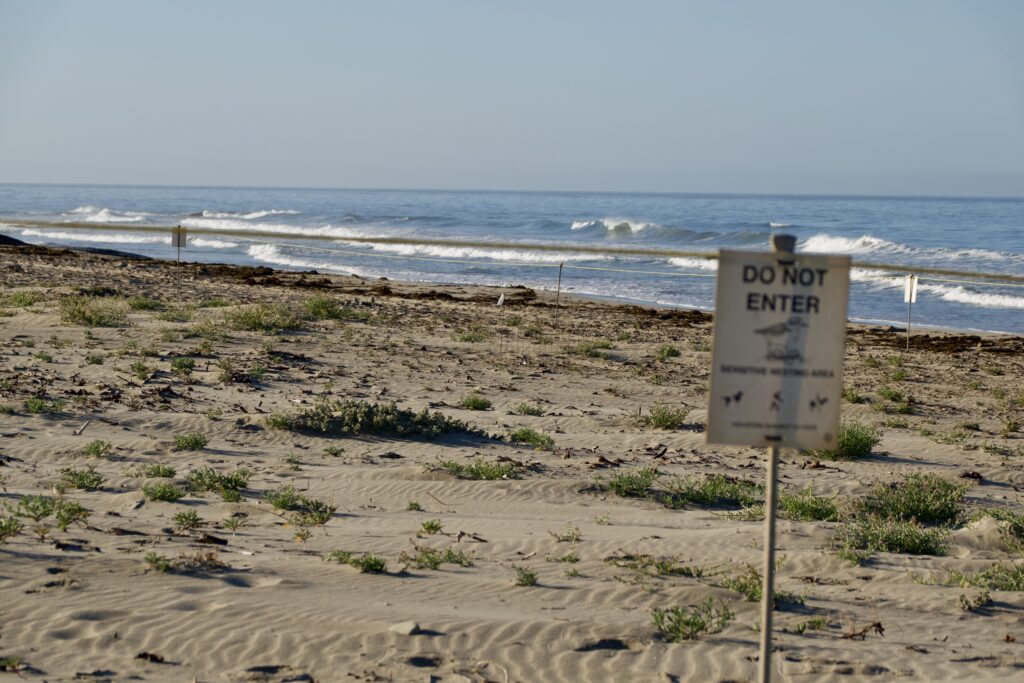
Snowy Plover nest site, Carpinteria State Beach, May 24, 2021 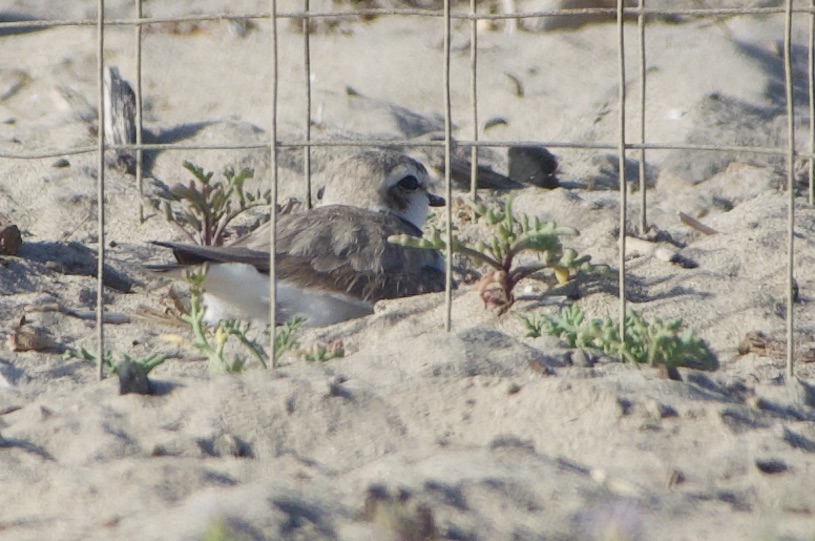
Nesting Snowy Plover, Carpinteria State Beach, May 24, 2021
*Update: I was able to chat today with Heidi Ortloff, the interpretive ranger at the State Beach, and she filled me in on some additional details:
- There actually was a Snowy Plover nesting attempt near this location last year. That attempt failed when the nest was destroyed by a high tide.
- The female bird in that case was identifiable by its color bands as a young bird that had been raised in the plover rescue program at the Santa Barbara Zoo.
- When I visited the site today I saw the female bird on the nest again, but she became agitated when I stopped opposite the nest near the water’s edge to observe her. She left the nest and walked about 10 feet to the right and stayed there for several minutes, only returning to the nest after I’d moved further down the beach. Heidi told me she’d seen the same behavior; apparently this bird is quite sensitive to people stopping to look at the nest, even if they are well outside the protective rope fencing.
- When she left the nest I was able to see that there were three eggs in it, which is the most-common clutch size for Snowy Plovers.
- I was also able to see that the bird was banded and get photos of her bands. It’s difficult to determine the colors due to weathering, but it might be (faded) yellow over (very faded) green on the left leg, red over blue on the right leg.**
- I did not see the male bird today, but presumably he was in the area somewhere.
** Later Update: Today I received a much-appreciated email from plover expert Bill Crowe, who wrote:
This is nb:rb. This bird was banded as a chick at Vandenberg AFB. The first time that I saw this combo was October of 2017 at surf beach in Lompoc. The upper band on the left is ta(n) over (b)lue. The metal service bands fade over time. The right leg is (r)ed over(b)lue. When I first saw this bird the blue band on the left leg was actually blue.
The plovers are still going strong as of today, Thursday, May 27. Here’s hoping they can successfully hatch and fledge one or more young.
*** Still Later Update: After visiting the site himself and getting better photos of the female bird’s bands, Bill now believes the original band color of the lower band on the left leg was white. That would make the bird’s band combo nw:rb, which would mean she was originally banded as a chick in 2013 at the VAFB – Surf North site just south of Ocean Beach Park west of Lompoc.
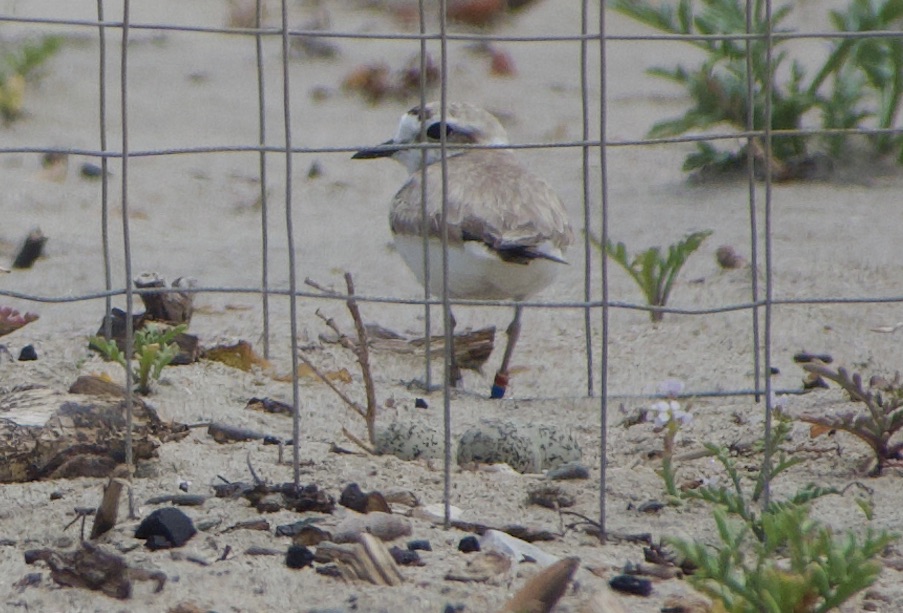
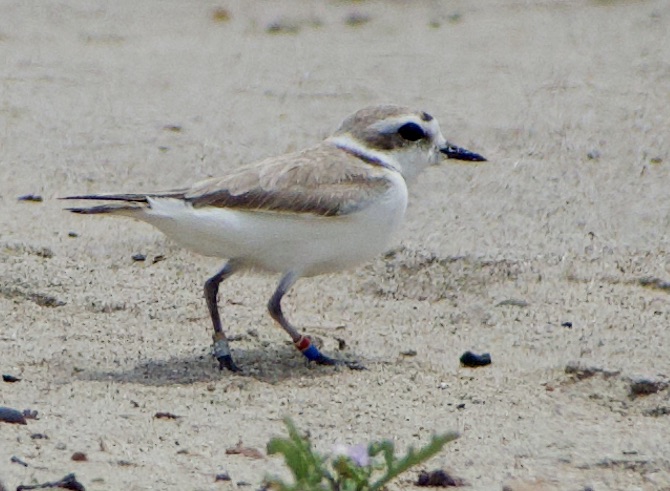
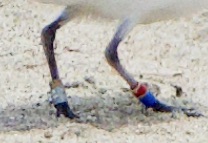
1 thought on “Snowy Plover nest on Carpinteria State Beach”
Comments are closed.